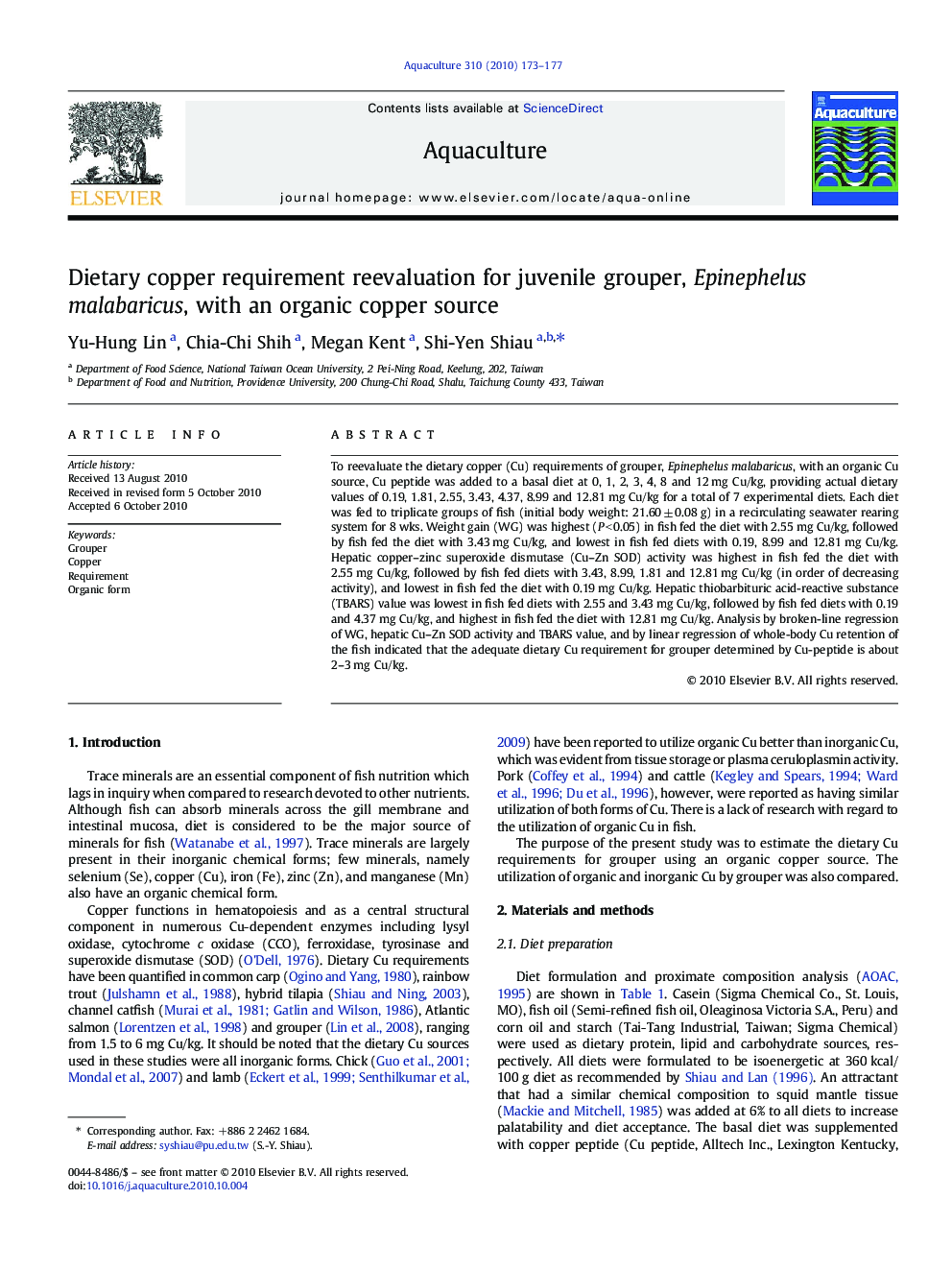| Article ID | Journal | Published Year | Pages | File Type |
|---|---|---|---|---|
| 2423430 | Aquaculture | 2010 | 5 Pages |
To reevaluate the dietary copper (Cu) requirements of grouper, Epinephelus malabaricus, with an organic Cu source, Cu peptide was added to a basal diet at 0, 1, 2, 3, 4, 8 and 12 mg Cu/kg, providing actual dietary values of 0.19, 1.81, 2.55, 3.43, 4.37, 8.99 and 12.81 mg Cu/kg for a total of 7 experimental diets. Each diet was fed to triplicate groups of fish (initial body weight: 21.60 ± 0.08 g) in a recirculating seawater rearing system for 8 wks. Weight gain (WG) was highest (P < 0.05) in fish fed the diet with 2.55 mg Cu/kg, followed by fish fed the diet with 3.43 mg Cu/kg, and lowest in fish fed diets with 0.19, 8.99 and 12.81 mg Cu/kg. Hepatic copper–zinc superoxide dismutase (Cu–Zn SOD) activity was highest in fish fed the diet with 2.55 mg Cu/kg, followed by fish fed diets with 3.43, 8.99, 1.81 and 12.81 mg Cu/kg (in order of decreasing activity), and lowest in fish fed the diet with 0.19 mg Cu/kg. Hepatic thiobarbituric acid-reactive substance (TBARS) value was lowest in fish fed diets with 2.55 and 3.43 mg Cu/kg, followed by fish fed diets with 0.19 and 4.37 mg Cu/kg, and highest in fish fed the diet with 12.81 mg Cu/kg. Analysis by broken-line regression of WG, hepatic Cu–Zn SOD activity and TBARS value, and by linear regression of whole-body Cu retention of the fish indicated that the adequate dietary Cu requirement for grouper determined by Cu-peptide is about 2–3 mg Cu/kg.
